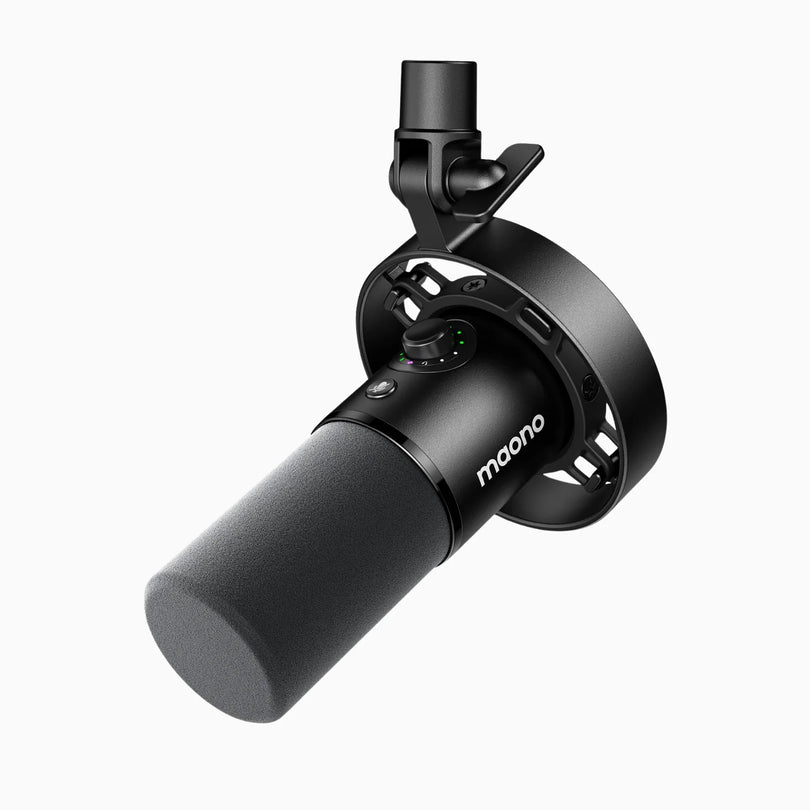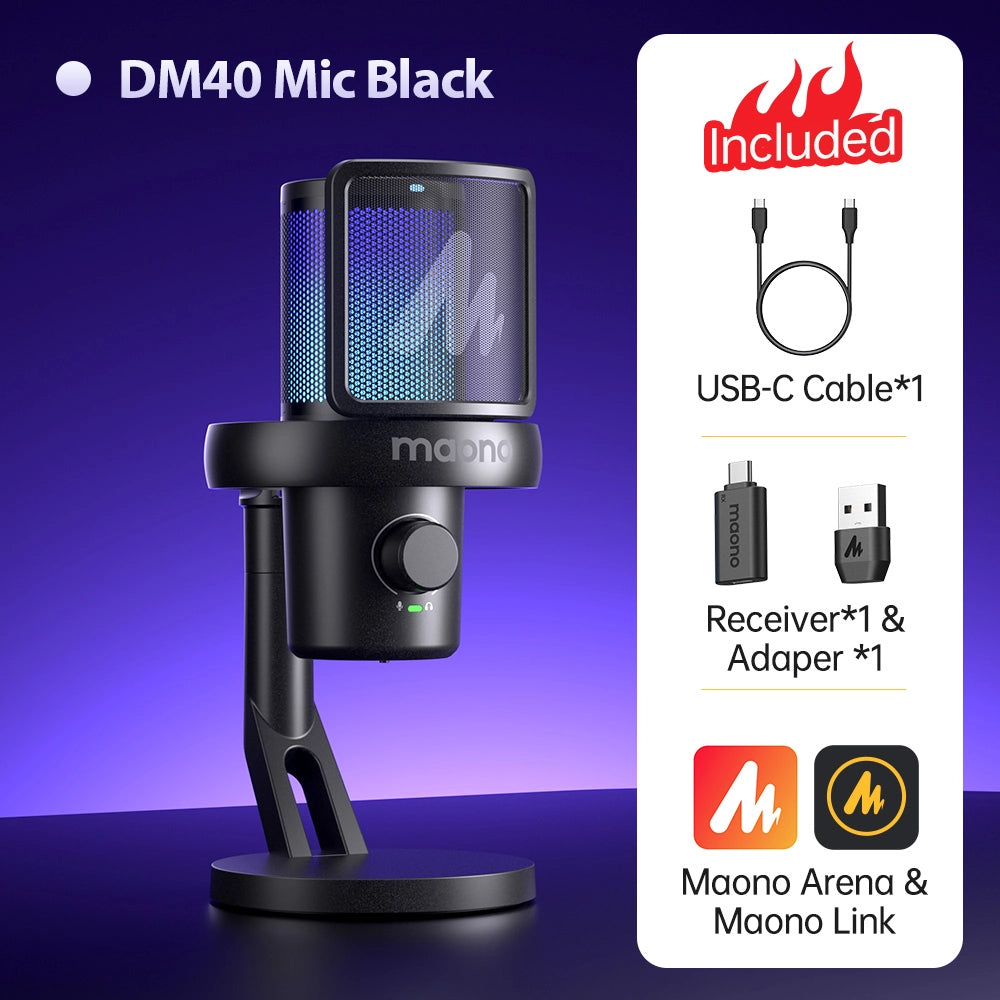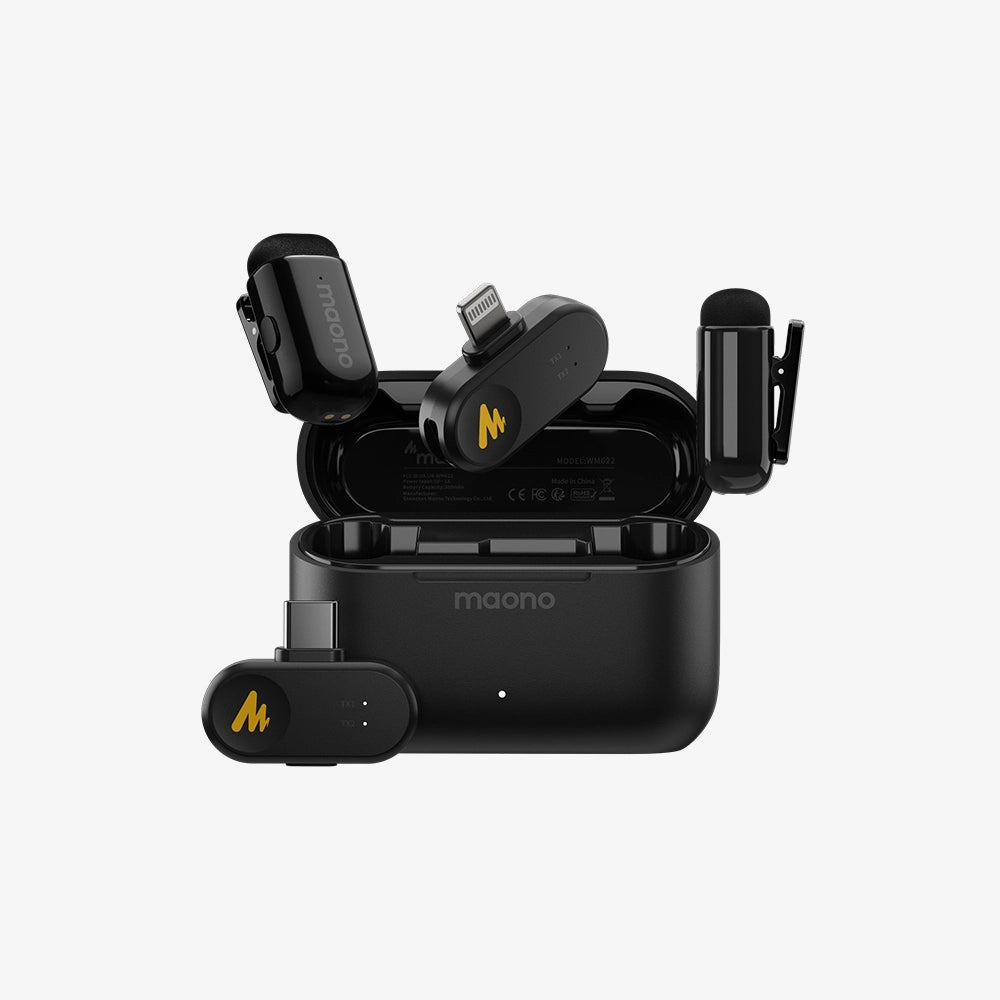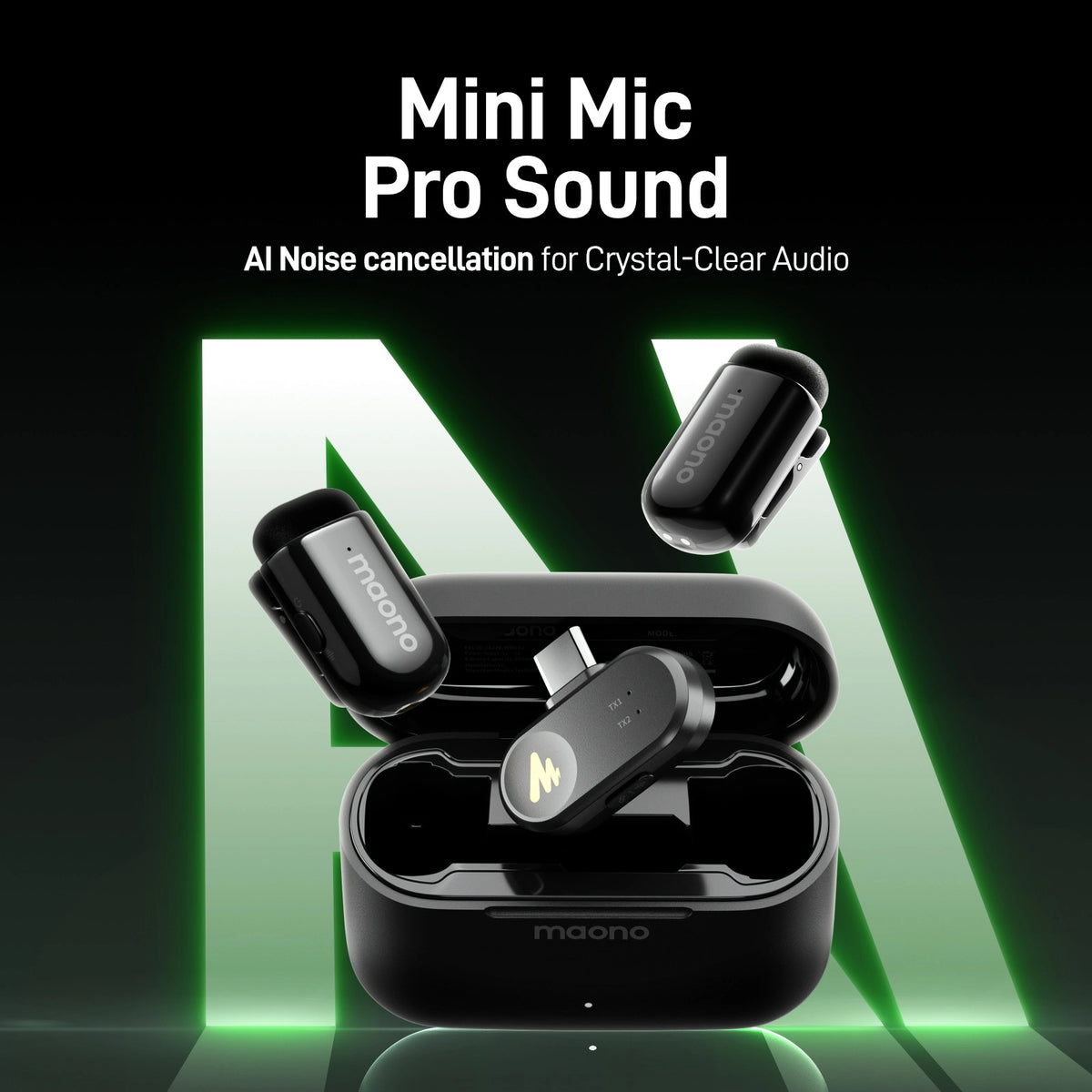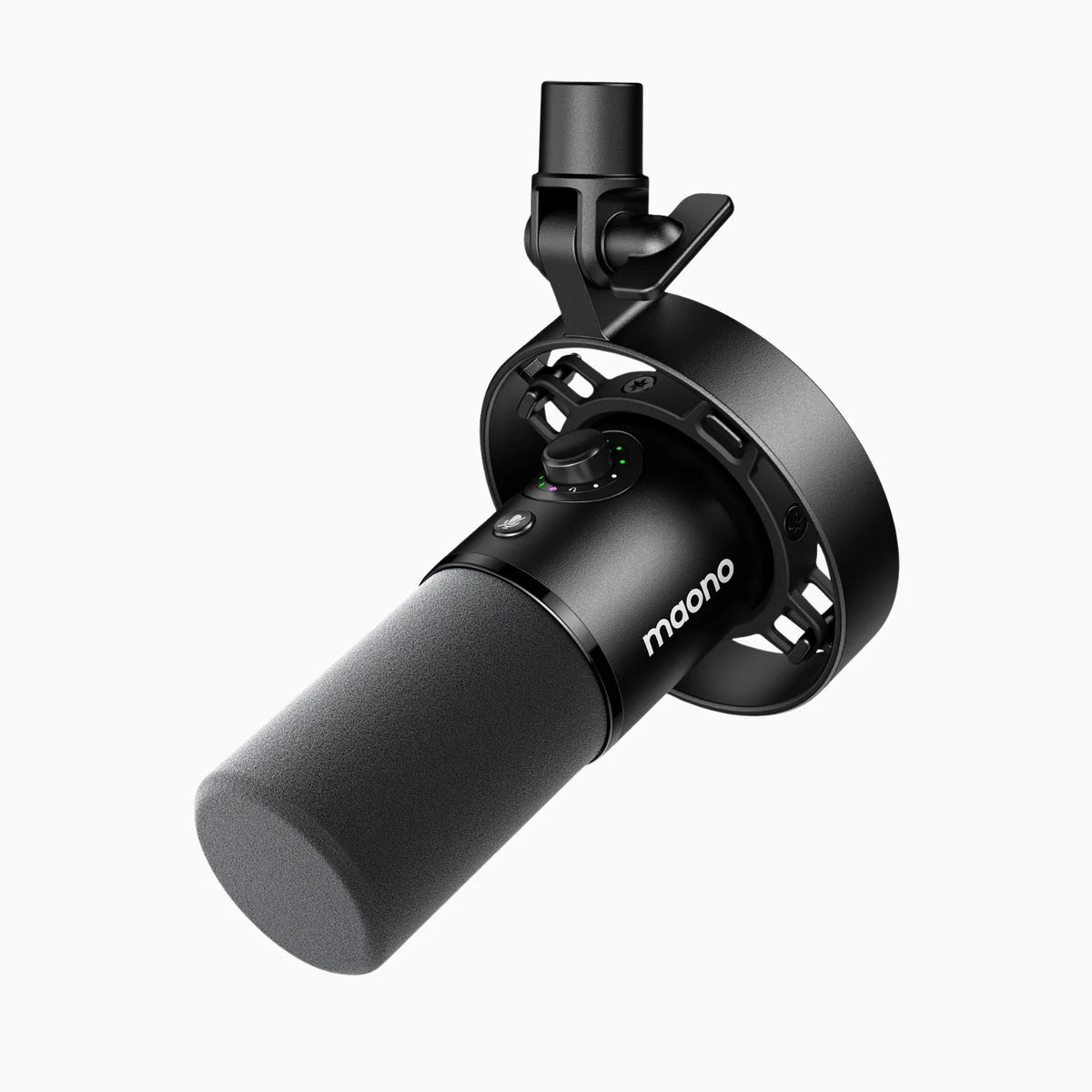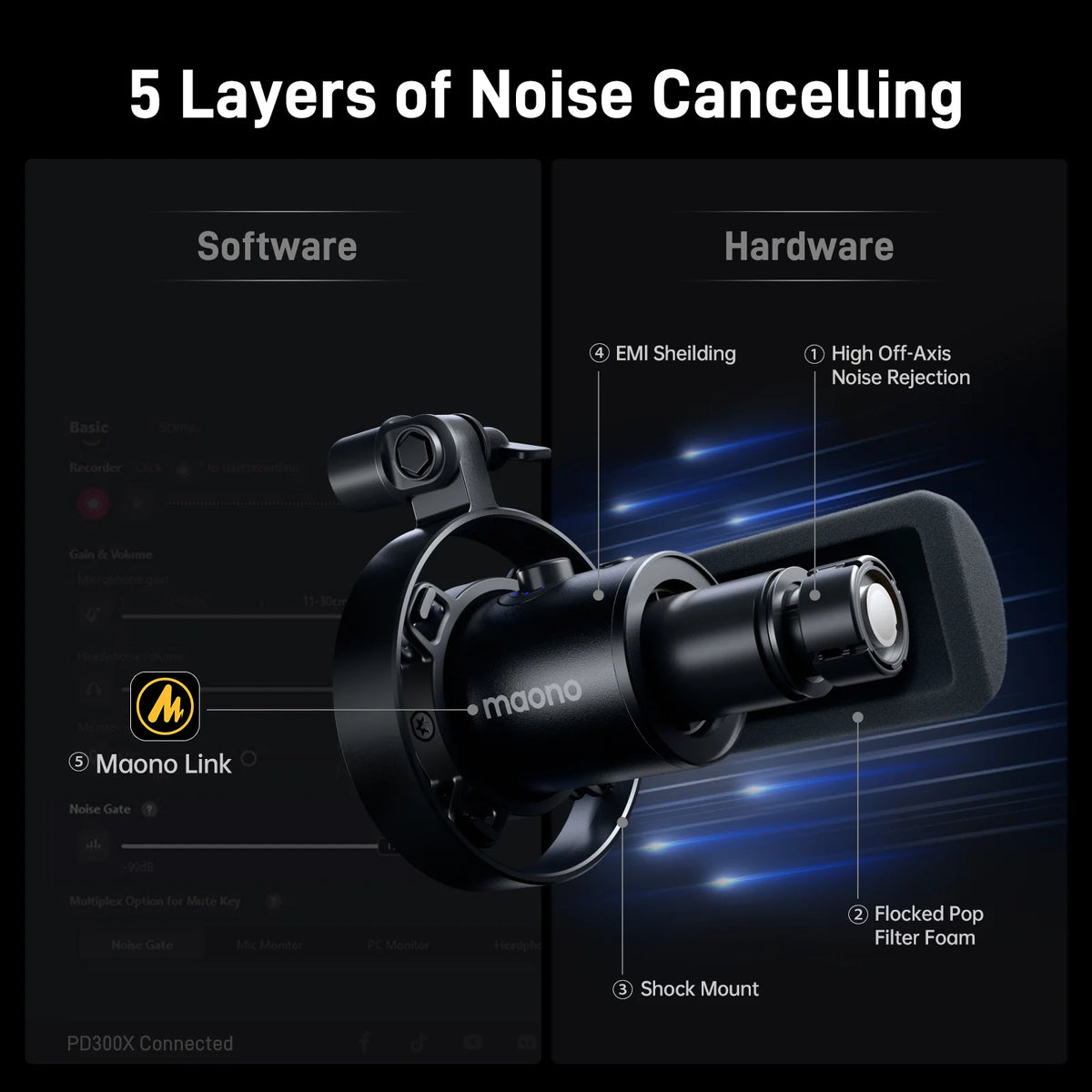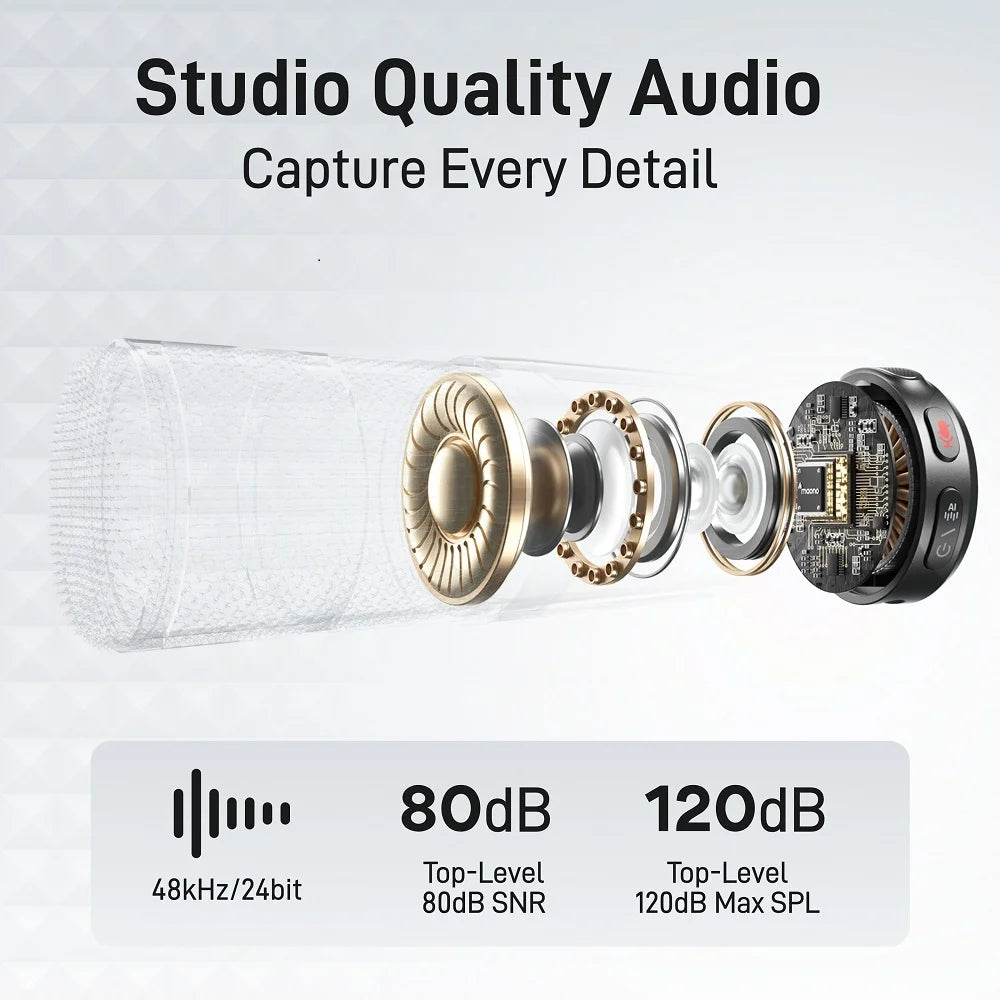As creative music artists, we always want to experiment with how we sound or how our audience wants to hear our music. It’s always a good idea to try something new and elevate our audio by using a new condenser microphone in the studio.
Walk into any professional music studio or radio station, and chances are you'll see a condenser microphone front and center. These microphones have long been the gold standard in capturing clear, rich, and highly detailed sound—making them an essential tool for vocalists, instrumentalists, podcast hosts, and live radio broadcasters. But what exactly makes a condenser microphone so widely favored in these settings? This article explores the unique properties of condenser microphones and why they continue to dominate both studio recordings and live radio environments.

Why Are Condenser Microphones Usually Used in Music Studios?
Condenser microphones are prized for their sensitivity and wide frequency response, which makes them ideal for studio environments. Their internal design features a lightweight diaphragm that reacts quickly to sound waves, allowing for detailed audio capture. This characteristic makes them the best microphone condenser for vocals, especially in genres where vocal clarity and dynamics are crucial. For artists on a tight budget, options like a budget condenser microphone still offer remarkable sound quality without breaking the bank. The best budget microphone for singing often falls within the condenser category due to its balance of affordability and performance.
Why Do Most Musicians Record Acoustic Guitar Instrumentals with a Condenser Mic Instead of the Internal Guitar Pickups?
Internal guitar pickups are designed primarily for live amplification, not detailed recording. They capture the vibration of the strings rather than the acoustic resonance of the guitar body. While this works fine for performance, it can make a recorded track sound flat or unnatural.
On the other hand, condenser microphones capture the full range of an acoustic guitar's sound, including the harmonics, overtones, and body resonance. Placing a condenser mic strategically in front of the guitar (often near the 12th fret or the soundhole) allows musicians to achieve a warm, full-bodied tone that pickups simply can't provide. This is why most professional acoustic recordings rely on condenser microphones for a more authentic, dynamic sound.
When recording acoustic guitar, using a condenser microphone for acoustic guitar captures the natural tone, resonance, and subtleties that internal pickups often miss. While pickups focus on string vibration, condenser mics capture the full body of the instrument, including the wood and ambient reflections. This creates a more authentic and warm acoustic sound that listeners prefer.
Can Condenser Mics Handle High Sound Pressure from Excited Hosts?
Yes, modern condenser microphones can handle relatively high sound pressure levels (SPL), especially when designed with radio or podcasting in mind. While condenser mics are traditionally more sensitive than dynamic mics, many of them—especially those used in broadcasting—are engineered with pads or SPL protection to handle loud voices or excited on-air moments without distortion.
Models like the Maono PM450 or PM422, for example, include built-in -10dB pads and high SPL ratings, which allow them to manage raised voices and dynamic speech patterns effectively during live shows.
What Makes a Condenser Microphone Suitable for Live Radio?
For live radio, clarity and precision are key. A good condenser microphone will pick up every detail in the speaker’s voice, offering a polished and professional broadcast sound. Their frequency response ensures both high and low vocal tones are captured accurately. The best budget microphone for singing often overlaps with those ideal for radio due to similar sound quality demands.
What Polar Pattern Is Best for Condenser Mics in a Radio Booth?
The most commonly used polar pattern for radio is cardioid. A cardioid pickup pattern focuses on the sound directly in front of the microphone while minimizing background noise from the sides and rear. This makes it perfect for radio booths, where isolation of the host’s voice from room noise or guest chatter is crucial.
Some condenser microphones also offer switchable polar patterns—cardioid, omnidirectional, and figure-8—which can be useful in multi-speaker setups, interviews, or roundtable discussions.
Tips for Setting Up a Condenser Mic in a Radio Studio
Setting up a condenser mic properly ensures optimal sound quality. Here are a few essential tips:
-
Use a pop filter
This helps reduce plosive sounds (like P's and B's) that can cause distortion.
-
Position correctly
Place the mic 6–12 inches from the speaker’s mouth and slightly off-center to avoid harsh breath noise.
-
Use a shock mount
This isolates the mic from desk vibrations and accidental bumps.
-
Control the room
Use foam panels or carpets to reduce reverb and echo.
These small adjustments can make a significant difference in live audio clarity.
How Do I Connect a Condenser Mic to My Radio Station Setup?
Most condenser microphones require phantom power (48V), typically supplied by audio interfaces or mixers. USB condenser mics simplify this with plug-and-play functionality, making them perfect for modern radio setups. Look for a budget condenser microphone with USB or XLR options depending on your gear. Here’s a quick setup path:
-
XLR condenser mic →
-
XLR cable →
-
Audio interface or mixer with phantom power →
-
Computer or broadcasting system (e.g., via USB, XLR-out, etc.)
USB condenser microphones like the Maono PM422 simplify this by having built-in audio interfaces and plug-and-play compatibility, ideal for smaller or mobile radio setups.
How Do I EQ a Condenser Mic for Radio Broadcasting?
EQ (equalization) is essential for tailoring your mic sound. A basic EQ strategy for vocal broadcasting includes:
-
Low cut (80–100Hz): Removes rumble and low-end noise.
-
Boost mids (1–3kHz): Adds clarity and presence to the voice.
-
Cut harsh highs (above 10kHz): Tames sibilance and sharpness.
-
Roll off lows below 80Hz: To avoid unnecessary bass buildup.
These tweaks ensure your voice remains crisp and intelligible over the air.
What’s the Best Gain Level for a Condenser Mic in Live Radio?
Setting the correct gain is crucial. Too low, and your voice sounds weak; too high, and you risk clipping and distortion. As a rule:
-
Start with your gain dial at around 40–50%.
-
Speak into the mic at your normal broadcast level.
-
Aim for levels that peak around -6dB to -3dB on your input meter.
Avoid letting the levels go into the red, which indicates distortion. Using a compressor or limiter in your signal chain can also help manage dynamic spikes.
How Do I Prevent Plosive Sounds During Live Radio Shows?
Plosive sounds, caused by bursts of air from “p,” “t,” and “b” consonants, can ruin an otherwise clean recording. Here are some prevention tips:
-
Use a pop filter or foam windscreen in front of the mic.
-
Speak slightly off-axis to avoid direct airflow hitting the diaphragm.
-
Adjust mic height so the speaker talks slightly downward or across the mic.
Proper technique and equipment go a long way in avoiding these common pitfalls.
What Are the Most Common Mistakes When Using Condenser Mics in Live Radio?
Some frequent mistakes include:
-
Not using a pop filter: Leads to plosives and distortion.
-
Incorrect mic placement: Causes muffled or inconsistent audio.
-
Ignoring room acoustics: Results in echo or background noise.
-
Overdriving gain: Leads to distortion or clipping.
-
Using poor cables or faulty phantom power sources: Results in hums or dropouts.
Avoiding these issues ensures a smooth, professional broadcast every time.
How Radio Stations Manage Mic Bleed and Background Noise
Mic bleed—when one mic picks up sound intended for another—is a common challenge, especially in multi-host setups. Here’s how stations manage it:
-
Use directional cardioid condenser mics
-
Position mics strategically to reduce overlap
-
Use acoustic treatment like foam panels to absorb excess sound
-
Utilize gating and isolation plugins in post-production or live mixing
-
Use headphones to prevent speaker feedback from entering open mics
These methods help maintain clean, focused recordings in busy studio environments.
Best Condenser Microphones for Radio Stations
If you're in the market for a great condenser microphone for drums, vocals, or broadcasting, two standouts are the Maono PM450 and Maono PM422.
Maono PM450
The Maono PM450 is a budget-friendly, studio-quality condenser mic that offers:
-
Type: Large-diaphragm condenser microphone
-
Features: Cardioid pattern, USB connectivity, metal body, pop filter, shock mount
-
Best for: Vocal clarity, podcasting, and music production
-
Why it’s great: A top pick as a best budget microphone for singing, the PM450 offers studio-level audio for an affordable price.
It’s an ideal choice for radio broadcasters who want clarity, reliability, and affordability.
Maono PM422
The Maono PM422 is a USB condenser microphone that’s perfect for plug-and-play use:
-
Type: Condenser microphone
-
Features: Real-time monitoring, mute button, gain control, USB plug-and-play
-
Best for: Voiceovers, radio, and live streaming
-
Why it’s great: A true budget condenser microphone that competes with premium models, delivering impressive detail and dynamic range.
Whether you're miking vocals, acoustic guitar, or even setting up a condenser microphone for drums, both of these options handle a wide variety of applications with professional results.
Maono mics’ ease of use and clean sound make it perfect for radio hosts, podcasters, or mobile studio setups.

Conclusion
Condenser microphones continue to be the top choice for both music studios and radio stations thanks to their superior sound quality, sensitivity, and versatility. From capturing the richness of an acoustic guitar to delivering clear and expressive vocals in a live broadcast, condenser mics like the Maono PM450 and PM422 offer professional-grade performance without breaking the bank.
From studio recording to live radio, condenser microphones continue to dominate due to their clarity, sensitivity, and versatility. Whether you're capturing the soulful tones of an acoustic guitar or broadcasting to thousands of listeners, the right condenser mic can elevate your audio experience. With choices ranging from high-end models to the best budget microphone for singing, there’s a perfect fit for every voice and application. Whether you're building a home studio, upgrading a radio booth, choose wisely: the best microphone condenser for vocals or a condenser microphone for acoustic guitar or the best condenser microphone for drums–depending on your use case scenario. Condenser mics remain the top choice for quality audio capture. When you’re aiming for broadcast-ready clarity, investing in a reliable condenser microphone is a decision that pays off in every word, note, and sound you capture.
Related Articles:
What Recording Microphone is Best for Singing?
Singing Microphone USB Tips: Tips, Tricks, and Best Mic for Vocals




